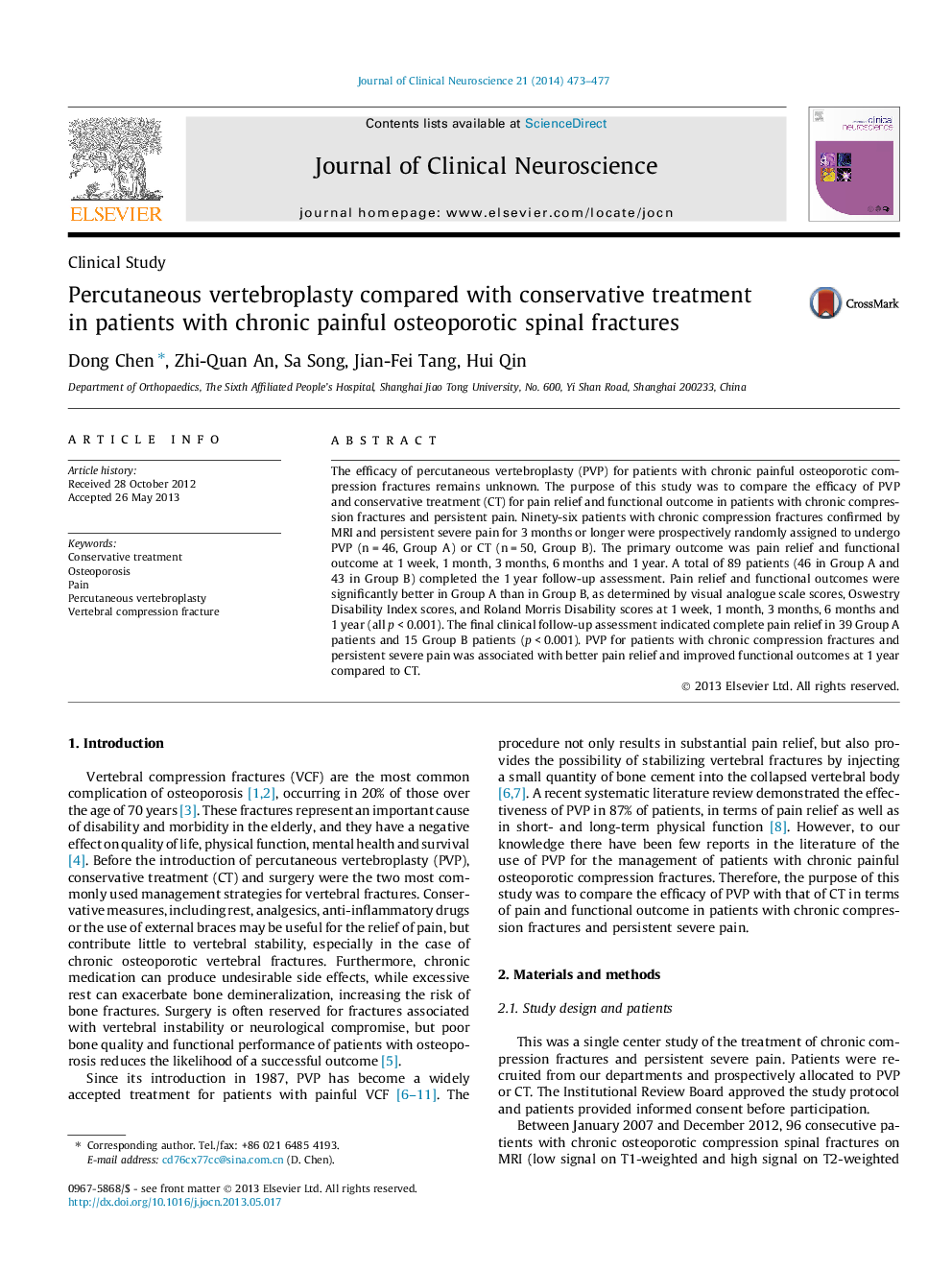| Article ID | Journal | Published Year | Pages | File Type |
|---|---|---|---|---|
| 3059444 | Journal of Clinical Neuroscience | 2014 | 5 Pages |
The efficacy of percutaneous vertebroplasty (PVP) for patients with chronic painful osteoporotic compression fractures remains unknown. The purpose of this study was to compare the efficacy of PVP and conservative treatment (CT) for pain relief and functional outcome in patients with chronic compression fractures and persistent pain. Ninety-six patients with chronic compression fractures confirmed by MRI and persistent severe pain for 3 months or longer were prospectively randomly assigned to undergo PVP (n = 46, Group A) or CT (n = 50, Group B). The primary outcome was pain relief and functional outcome at 1 week, 1 month, 3 months, 6 months and 1 year. A total of 89 patients (46 in Group A and 43 in Group B) completed the 1 year follow-up assessment. Pain relief and functional outcomes were significantly better in Group A than in Group B, as determined by visual analogue scale scores, Oswestry Disability Index scores, and Roland Morris Disability scores at 1 week, 1 month, 3 months, 6 months and 1 year (all p < 0.001). The final clinical follow-up assessment indicated complete pain relief in 39 Group A patients and 15 Group B patients (p < 0.001). PVP for patients with chronic compression fractures and persistent severe pain was associated with better pain relief and improved functional outcomes at 1 year compared to CT.
